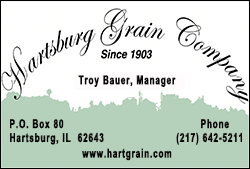|
 The play, which opens Tuesday for a limited run at the June
Havoc Theater in Manhattan, is performed by a cast of deaf and
hearing actors who use American Sign Language (ASL) and speak
the lines simultaneously. The play, which opens Tuesday for a limited run at the June
Havoc Theater in Manhattan, is performed by a cast of deaf and
hearing actors who use American Sign Language (ASL) and speak
the lines simultaneously.
"We basically cast two people for each role," said JW Guido, an
actor and the artistic director of the New York Deaf Theatre (NYDT),
said in an interview through an ASL interpreter.
"The show is performed with deaf actors signing in ASL and the
hearing actors will simultaneously be speaking their lines," he
added.
"The Strange Case of Dr. Jekyll and Mr. Hyde," adapted from the
novella by Robert Louis Stevenson, is Guido's fourth production
for the company since taking over as artistic director four
years ago.
Set in London in the late 1880s, it follows renowned British
scientist Dr. Henry Jekyll as he explores the darker side of
human nature by concocting a chemical formula that enables him
to transform himself into the evil, murderous Edward Hyde.

Jekyll keeps his exploits secret from his friends with the help
of his loyal maid and butler, who act as the narrators for the
play.
"I wanted something classic and it is beautifully written," said
Guido, 28. "When I found this translation of the script, I
thought it would be great and would give the actors an
opportunity to do something classic."
But first Guido, who plays one of Hyde's victims, Richard
Enfield, in the play, had to translate it into ASL, which he
said was a challenge that was further complicated by the fact
that it is a period piece and the actors speak with a British
accent.
"ASL has its own dialect, like an accent," Guido said. "There
are variations of the language. A lot of people do not realize
that."
CHALLENGES
Unlike some deaf theater companies which use just sign language,
NYDT productions includes signing and speaking parts and appeal
to deaf and hearing audiences.

[to top of second column] |
 The dual roles pose additional challenges for the actors,
some of whom sign and speak as well as act, while others act and
sign while another actor provides the dialogue that must be
synched to the signing.
The 13-member cast of "The Strange Case of Dr. Jekyll and Mr.
Hyde" includes a nearly equal number of deaf and hearing actors.
"The challenge for the hearing actors is that most of them don't
know any sign language, so how are they going to know when to match
when I am signing my lines?" said Robert DeMayo, 50, who plays
Jekyll and Hyde, with Taylor Pavlik voicing the role.
"You really have to stick together closely so, even if they don't
know what I'm saying, they know this sign and that movement means
this, so they match it."
DeMayo, who has been acting for 30 years and has performed with
the National Deaf Theatre, said opportunities for deaf actors have
dwindled because there are fewer deaf theater companies and
opportunities for deaf actors in television and films.
"There have been a lot of funding cuts to the arts, of course, which
makes it harder for everyone, and that makes it increasingly harder
for deaf actors," he said.

Although NYDT will soon be celebrating its 35th anniversary, making
it one of the longest-running deaf theater companies in the country,
Guido said it is still quite rare.
"My goal is just to give opportunities for the performers and deaf
people in theater, as well as the audience. There are plenty of new
stories that can be translated into ASL," he said.
(Editing by Mary Milliken and Bernadette Baum)
[© 2014 Thomson Reuters. All rights
reserved.] Copyright 2014 Reuters. All rights reserved. This material may not be published,
broadcast, rewritten or redistributed. |